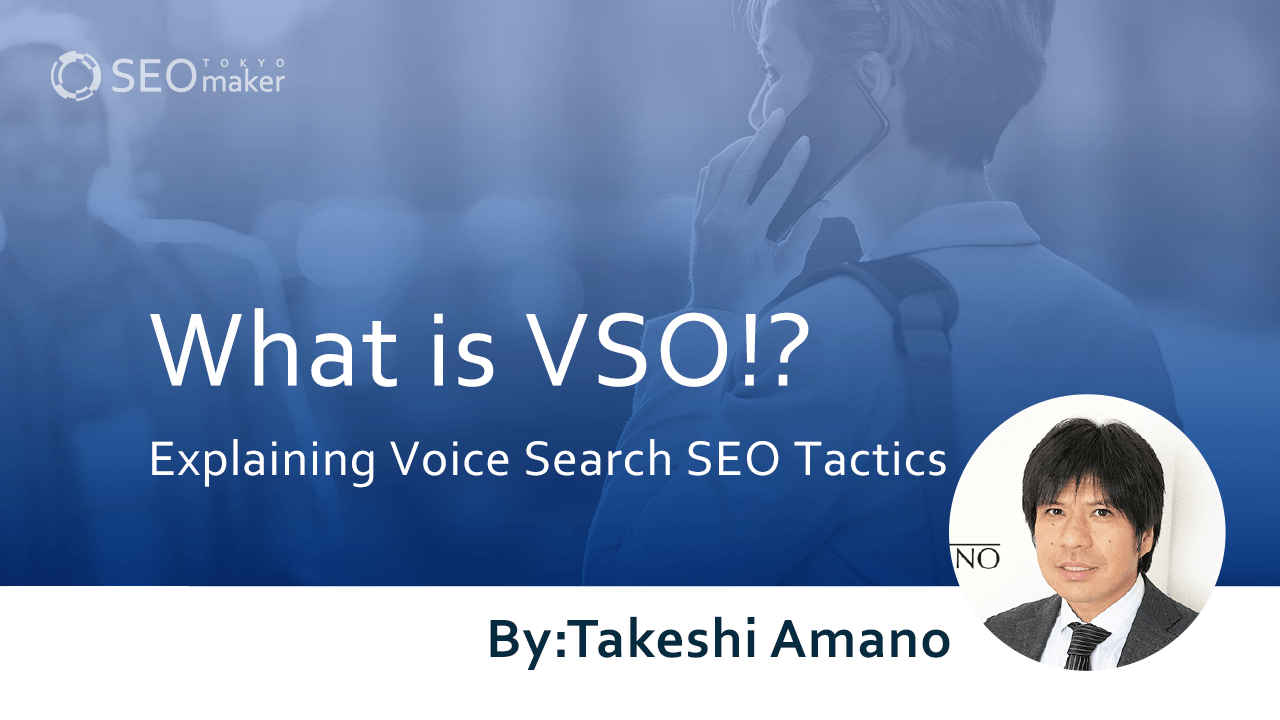What is VSO!? Explaining Voice Search SEO Tactics
contents
 Recently, various IT technologies have evolved, with voice input and voice search gaining particular attention. Normally, we input text via keyboards or smartphone screens, but voice usage allows for input without using hands.
Recently, various IT technologies have evolved, with voice input and voice search gaining particular attention. Normally, we input text via keyboards or smartphone screens, but voice usage allows for input without using hands.
However, many might wonder, “How does SEO apply to voice searches?” In fact, SEO exists for voice searches too, and it’s called VSO.
This time, let’s explain VSO, the SEO for voice searches. If you’re considering using voice search, please read until the end.
What is Voice Search?
Voice search refers to a function where a device inputs voice, and the spoken words are converted into text for searching.
For iPhone users, saying “Hey Siri” activates Siri, and it responds to spoken queries. Similarly, for Android, there’s “OK Google,” and recently, Amazon’s “Alexa” and Google’s “Google Home” are also voice input devices.
The mechanism of voice search involves a program within the input device that analyzes the voice, identifies the “phonemes” that machines can recognize from the human voice, and converts them into text.
Once a voice is input, it returns information suitable for the searched query on Google.
Why Voice Search is Gaining Attention
Voice search has been gaining attention recently, but why? One reason is the widespread use of smartphones.
Nowadays, most people use smartphones and can access internet information anytime. Both iOS and Android devices have voice input features, making voice search readily accessible.
Therefore, to make effective use of prevalent smartphones, there’s a movement to provide more information to users through voice search.
User Benefits of Voice Search
Although voice search usage is gradually increasing, it’s not yet fully widespread. However, voice search has the following benefits:
- Faster input speed
- Ability to search while doing other tasks
Let’s explain each benefit.
Faster Input Speed
The first benefit is the significantly faster speed for those not accustomed to keyboard input.
With voice search, the spoken words are immediately searched as text, making it faster than typing on a keyboard. However, for those who are used to typing on a keyboard and can do so blindly, keyboard input might be faster than voice search.
If you’re not familiar with keyboard input, using voice search is recommended.
Searching While Doing Other Tasks
The second benefit is the ability to search while doing other tasks. Voice search allows for hands-free searching as long as you can speak.
Thus, you can search without touching your computer or smartphone screen, making it convenient to search while doing dishes or cleaning.
Also, when it’s cumbersome to search in a separate window while working on a computer, voice search allows you to get the information you need without changing screens. However, avoid using voice search in quiet environments like trains or libraries.
Voice Search Will Continue to Grow
Voice search, with its many benefits, is expected to continue increasing in popularity. The internet research firm comScore announced that by 2020, 50% of searches on the internet would be through voice input.
Reference: Just say it: The future of search is voice and personal digital assistants|campaign
Another research firm, Gartner, also predicted that by 2020, 30% of searches would be conducted from devices without screens.
Reference: Gartner Predicts 30% Of Searches Without A Screen In 4 Years|MediaPost
Amidst these positive forecasts for voice search, about 70% of people in Japan feel embarrassed to use voice search in public.
Reference: 70% of Japanese Feel Embarrassed to Use Voice Search in Public
This result reflects the Japanese national character, feeling embarrassed to use it in public, but the technology continues to advance. To encourage the use of voice search, even in public, a system that reduces this reluctance is needed.
What is SEO for Voice Search (VSO)?
VSO stands for the SEO of voice search. Voice search differs from the traditional method of searching via keyboard input.
For example, when searching for a curry recipe, most people would type “curry recipe” into a search engine. However, with voice search, one might say to a voice input device, “Tell me how to make curry.”
Searches then begin based on the spoken query, necessitating content creation that takes conversational input into account.
In other words, unlike traditional SEO that optimizes for search engines, VSO has emerged as an optimization for voice search and is gaining attention.
Strategies for VSO
Many might be unsure about what strategies to adopt for voice search optimization. Since VSO primarily involves input from smartphones and other mobile devices, mobile optimization is essential.
The following four strategies are recommended for VSO.
Adapting to Conversational Phrases
The first strategy involves incorporating conversational phrases into content. In voice search, spoken language, rather than individual words, becomes the search keyword.
If you are creating content that explains something, including conversational phrases can make it more likely to appear in search results.
It’s also recommended to use simple language that everyone can understand, as most questions posed by users are composed of simple words.
Creating FAQ Pages
The second strategy is to create FAQ pages as part of your content. FAQ pages list questions and answers that users might find helpful or that have been asked in real inquiries.
FAQ pages often take a conversational form, making them more suitable for VSO. Especially when actual user inquiries are included, those phrases are more likely to be used in voice searches, making the content rank higher in VSO.
For example, if a financial institution’s FAQ page includes the question, “How long does it take to process a loan application?” it’s more likely to match a voice search query like, “Tell me the duration for a loan application.”
Those looking to enhance their VSO should consider utilizing FAQ pages.
Adapting to Local Content
The third strategy is to adapt to local content. Local content refers to content that provides information about restaurants, beauty salons, and other services specific to a particular area.
For instance, if someone is looking for recommended restaurants in an area they are visiting, voice search can be particularly useful if they are traveling by car and unable to type.
Including local keywords in the content or links with local names can make the content more localized and likely to appear in searches.
Optimizing for local searches is also known as “Local SEO.”
Improving Page Loading Speed
The fourth strategy is to improve the page loading speed. Like keyboard-based searches, voice searches require quick responses.
From a VSO evaluation perspective, content that loads quickly tends to be rated higher. To improve loading speed, reducing the number of images or changing the structure of JavaScript might be necessary.
Conclusion
This time, we explained VSO, the SEO for voice search. VSO, which stands for voice search optimization, offers similar benefits to traditional SEO when it ranks high. Moreover, voice search can be used alongside other tasks, so its use is expected to increase in the future. If you’re interested in VSO, consider this article as a reference for your content creation.










![What is a Description? Explaining the Meaning, Writing Style, and Changing Word Count – [2023 Edition]](https://www.switchitmaker2.com/en/wp-content/uploads/2024/09/what-is-description.webp)










